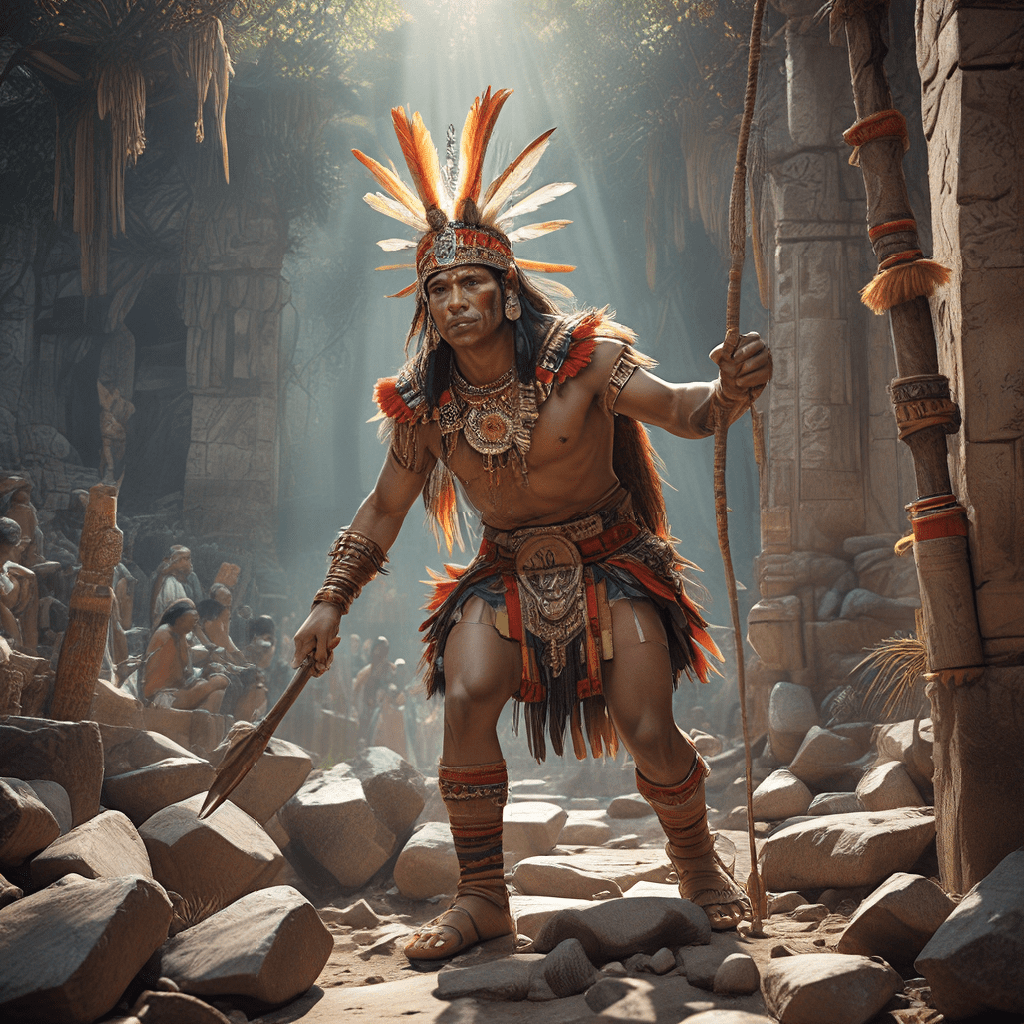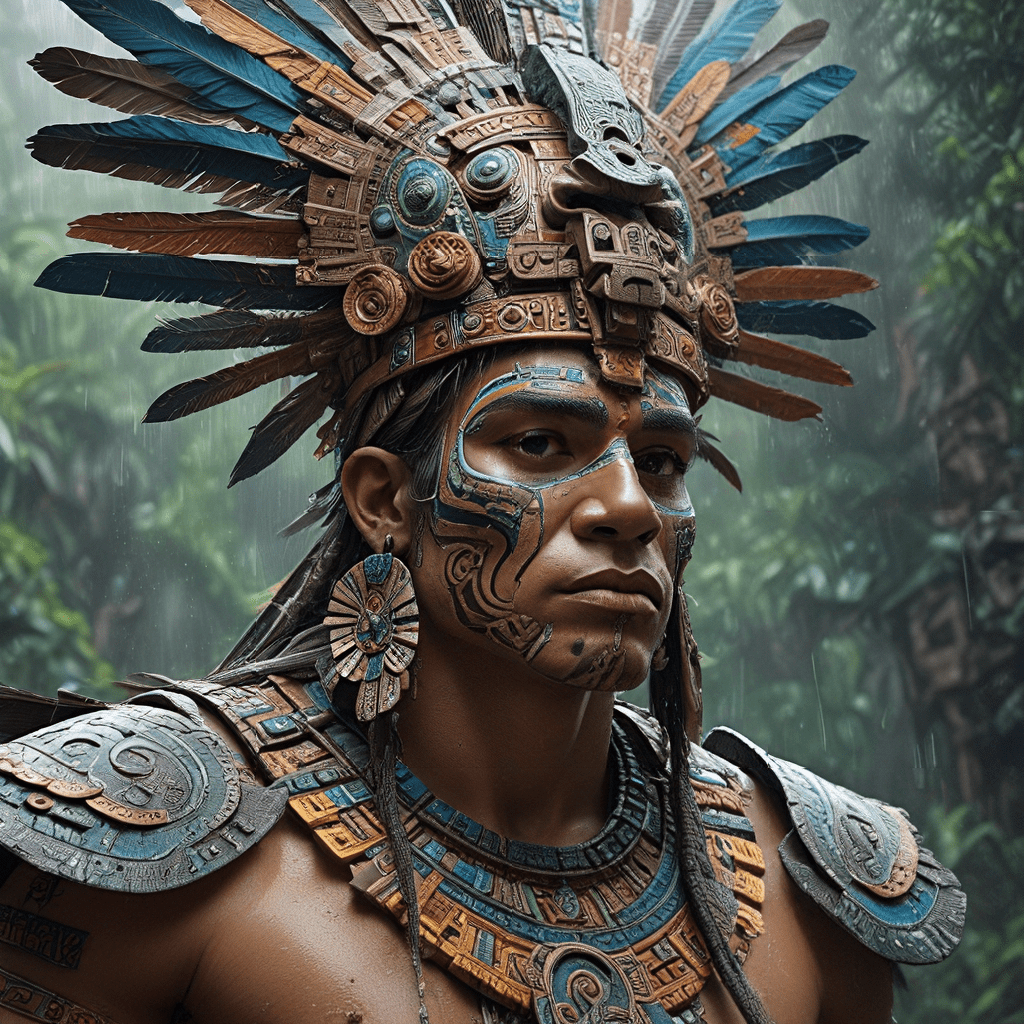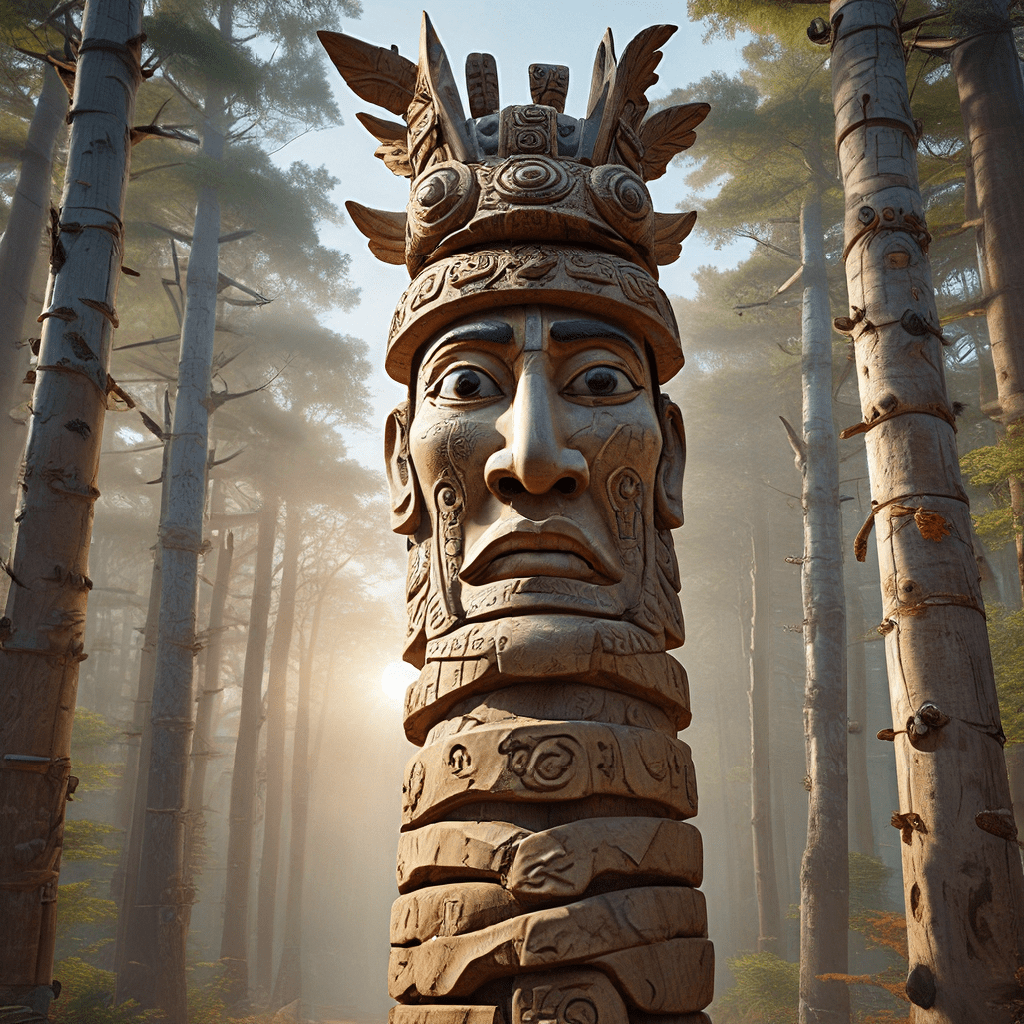Inca Mythology: A World of Divine Power and Cosmic Order
The Inca civilization, which flourished in the Andes Mountains of South America from the 13th to the 16th century, was deeply rooted in a rich and complex mythology. Their beliefs about the world, the universe, and the divine shaped every aspect of their lives, from their daily routines to their elaborate rituals. At the heart of Incan mythology lay a profound belief in the interconnectedness of all things and the vital role of divine beings in maintaining cosmic order.
The Inca believed that the world was governed by a hierarchy of gods and goddesses, each with their own unique powers and responsibilities. These divine beings were seen as both benevolent and demanding, requiring constant respect and offerings to ensure their favor. The Inca believed that failing to honor the gods could lead to misfortune, famine, or even natural disasters. As a result, they developed a sophisticated system of rituals and ceremonies designed to maintain their connection to the divine and appease their powerful patrons.
The Inti: The Sun God and Source of Life
At the pinnacle of the Incan pantheon stood Inti, the Sun God, who was considered the most important deity and the source of all life. Inti was believed to be responsible for the sun's rays that warmed the land, nourished the crops, and sustained all living things. His presence was felt in the daily cycle of dawn and dusk, and his power was celebrated in grand festivals that honored his vital role in maintaining the world's balance.
The Inca believed that Inti was the father of their first ruler, Manco Capac, and his sister-wife Mama Ocllo, who were said to have emerged from a sacred lake, bringing with them the knowledge and skills that allowed the Inca to establish their empire. Inti's image, often depicted as a golden disk, appeared on many Incan artifacts, including jewelry, clothing, and ceremonial objects. Even the Inca's capital city, Cuzco, was believed to have been built on the site of a sacred temple dedicated to the Sun God.
The Pachamama: The Earth Mother and Provider of Sustenance
In addition to the Sun God, the Inca also revered Pachamama, the Earth Mother, who was considered the provider of all sustenance and fertility. Pachamama was seen as the lifeblood of the Andean world, nurturing the crops that sustained the people and providing the resources necessary for their survival. She was often depicted as a woman with flowing hair, symbolizing the abundance of the earth and the importance of her role in sustaining life.
The Inca honored Pachamama with offerings of food, coca leaves, and even animal sacrifices, seeking her favor and ensuring her continued generosity. They believed that Pachamama was a powerful and capricious deity who could bring both prosperity and misfortune, and they carefully observed the signs of nature, such as the weather, the harvest, and the behavior of animals, in order to determine her mood and ensure they were in her good graces.
Beyond the Sun and Earth: A Multitude of Deities
Beyond Inti and Pachamama, the Incan pantheon was populated by a multitude of other gods and goddesses, each with their own special domains and responsibilities. These deities included the Moon Goddess, Mama Killa; the Thunder God, Illapa; the Star God, Ch'aska; and the creator god, Viracocha, who was believed to be responsible for the creation of the world and all its inhabitants.
The Inca also had gods and goddesses who represented specific aspects of nature, such as the mountains, the rivers, and the animals. Each of these deities was thought to have a unique personality and temperament and required specific rituals and offerings to ensure their favor. The diversity of the Incan pantheon reflected their profound respect for the natural world and their belief in the importance of maintaining harmony between humanity and the divine.
Rituals of Sacrifice: A Vital Link to the Divine
In their efforts to connect with the divine and ensure their well-being, the Inca practiced a variety of rituals and ceremonies. Among the most significant and widespread of these practices was sacrifice, which was seen as a vital way of communicating with the gods and ensuring their favor. Sacrifice was a deeply meaningful act that involved offering valuable things to the divine powers in exchange for blessings, protection, and prosperity. The Inca believed that sacrifice had the power to maintain cosmic balance, strengthen their connection to the divine, and secure the continued well-being of their people.
The Significance of Blood: A Symbol of Life Force and Renewal
In Incan mythology, blood held a powerful symbolic meaning, representing the life force that flowed through all living things. It was considered a sacred substance, and its offering was believed to be a potent way to connect with the divine. The Inca believed that blood possessed the ability to bridge the gap between the human and the spiritual realms, allowing them to communicate with the gods and request their favor.
The act of shedding blood during sacrifice was seen as a way of "feeding" the gods, providing them with the vital energy they needed to maintain cosmic order and ensure the well-being of the world. The Inca believed that by offering their blood, they were symbolically sharing their life force with the divine beings, fostering a strong bond of reciprocity and dependence.
Human Sacrifice: The Ultimate Offering to the Gods
The most dramatic and controversial aspect of Incan sacrifice was the offering of human lives. Although the practice of human sacrifice was not unique to the Inca, it was a significant part of their religious practices and held profound meaning within their worldview. The Inca believed that human sacrifice was the ultimate offering, representing the highest level of devotion and demonstrating their willingness to give everything to their divine patrons.
Human sacrifices were typically reserved for special occasions, such as the inauguration of a new ruler, the start of a war, or during times of natural disaster. The victims were often chosen for their physical perfection, strength, or beauty, representing the very best of humanity. They were treated with great care and respect, often adorned with elaborate clothing and given a feast before their final moments. In some cases, the sacrifice was believed to appease the gods and prevent further misfortune.
Animal Sacrifice: Offerings of Respect and Gratitude
While human sacrifice was reserved for specific occasions, animal sacrifice was a more common practice. The Inca offered a wide variety of animals to the gods, including llamas, alpacas, guinea pigs, and even birds. These offerings were considered a gesture of respect and gratitude to the gods for their blessings and a way to ensure their continued favor.
The type of animal offered depended on the particular deity being honored. For example, llamas were often sacrificed to Inti, the Sun God, while alpacas were offered to Pachamama, the Earth Mother. The Inca believed that every animal had a specific energy and that by offering the appropriate animal, they could strengthen their connection to the divine and receive the desired blessings.
Theories on Incan Sacrifice: Maintaining Cosmic Balance
The motivations behind Incan sacrifice have been a subject of debate among scholars for generations. While some believe that sacrifice was primarily a way of appeasing the gods and preventing misfortune, others see it as a method of maintaining cosmic balance and ensuring the well-being of the world.
One popular theory suggests that the Inca believed that sacrifice was necessary to nourish the gods and ensure their continued strength and power. The gods, in turn, were responsible for maintaining the balance of nature, ensuring a bountiful harvest, and protecting the Inca people from harm. By offering their blood and their lives, the Inca believed that they were contributing to this cosmic balance and ensuring the survival of their civilization.
The Role of Sacrifice in Incan Society: Power, Control, and Social Hierarchy
Beyond its religious significance, Incan sacrifice also had important social and political implications. Sacrifice was a powerful tool used by the Inca elite to maintain their power and control over the population. By controlling the rituals of sacrifice, the Inca leaders demonstrated their connection to the divine and their authority to rule.
The act of sacrifice also served to reinforce the social hierarchy of Incan society. The sacrifices of chosen individuals, often those considered to be the "best of the best," highlighted the importance of maintaining a rigid social structure and reinforced the role of the elite as intermediaries between the people and the gods. The Inca used sacrifice not only to appease the divine but also to solidify their own position as the chosen leaders of the empire.
FAQ
Q: What were the main purposes of Incan sacrifice?
A: Incan sacrifice served several purposes, including appeasing the gods, ensuring the well-being of the world, maintaining cosmic balance, and consolidating the power of the Inca elite.
Q: What types of sacrifices did the Inca perform?
A: The Inca practiced both human and animal sacrifices. Human sacrifices were typically reserved for special occasions, while animal sacrifices were more common.
Q: What is the significance of blood in Incan sacrifice?
A: Blood was seen as a vital life force and a sacred substance in Incan mythology. Offering blood to the gods was believed to provide them with the energy they needed to maintain cosmic order and ensure the well-being of the world.
Q: Why is Incan sacrifice controversial?
A: The practice of human sacrifice is controversial because it involved the deliberate taking of human life. However, it is important to remember that the Inca believed that sacrifice was necessary to maintain cosmic balance and ensure the well-being of their people.



